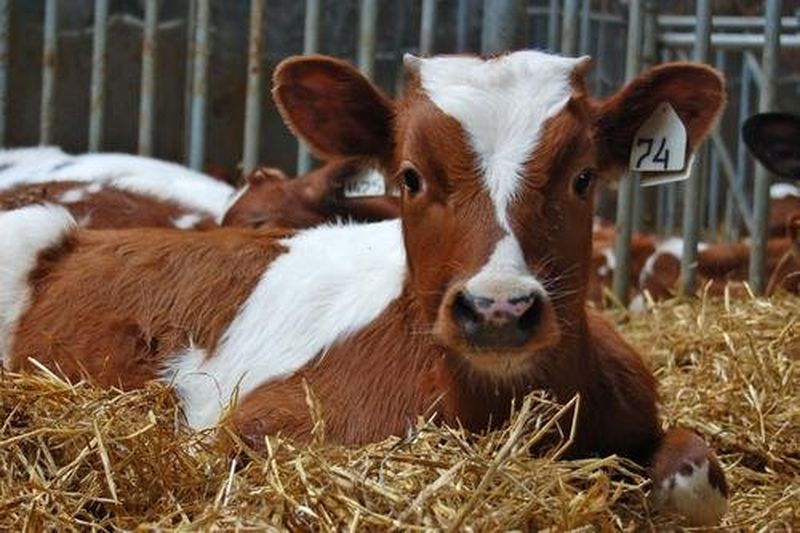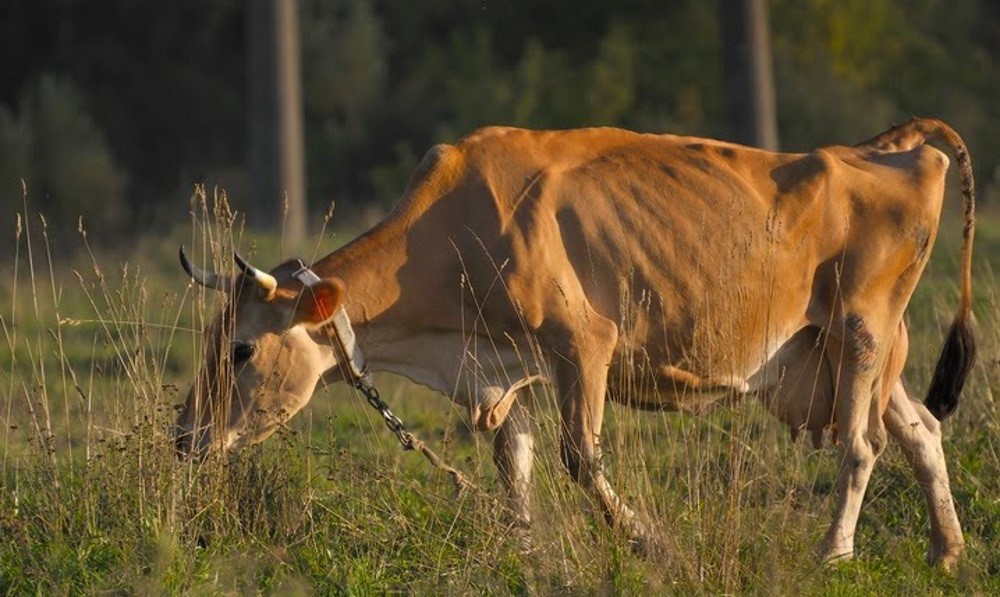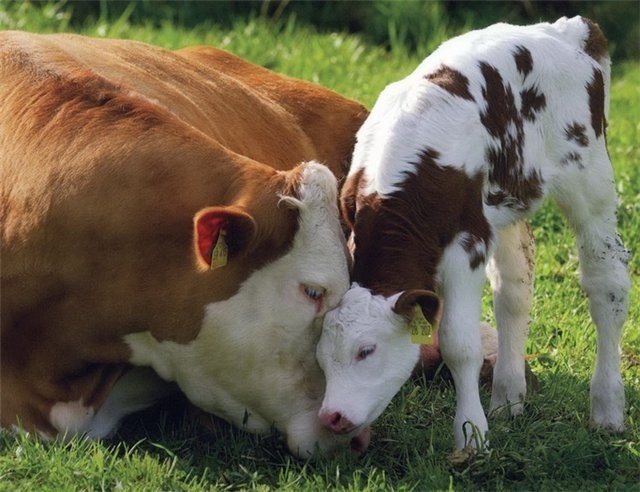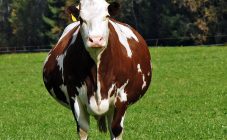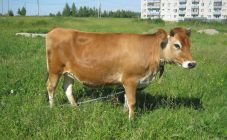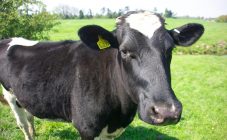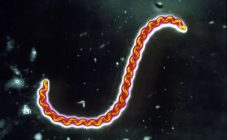Content:
Leukemia in cattle today, unfortunately, is very common. This pathology is characterized by a long and chronic course, affecting the hematopoietic system of the animal. The development of the disease is facilitated by infection with the bovine leukemia virus.
Can you drink milk from a leukemic cow and eat its meat? Until recently, it was believed that the disease could not be transmitted to humans, and, indeed, such cases were not recorded, but the likelihood of infection still exists, numerous results of scientific studies serve as confirmation. The animal has no immunity to this disease, therefore, absolutely resistant species and breeds of cattle are absent.
Leukemia in cows: a general description
Blood leukemia - what is it in cows? Each farmer must be aware of the peculiarities of the course of the disease, otherwise the likelihood of infection of other individuals, farm employees and family members increases significantly.
A characteristic feature of leukemia is a long latent stage. The first clinical symptoms can begin to appear in an animal that has reached 4 years of age. In the latent state, no deviations are noted: the cow is well-fed, gives good milk yield, behavior and condition are normal. In this case, the only possible options to investigate the disease are serological and hematological studies.
Thanks to them, it is revealed:
- serum antibodies;
- high concentration of atypical and immature blood cells in the blood;
- leukocytosis.
Nonspecific signs of damage are noted:
- deterioration of the general physical condition of cows;
- swelling in the dewlap and intermaxillary space;
- emaciation, decreased weight gain and milk yield are common;
- weakening of the heart beat;
- fast fatiguability;
- scar atony.
During this stage of leukemia, it is still difficult to diagnose the disease, but it begins to develop at an accelerated pace. The next stage is terminal. As a rule, this stage does not occur, since affected individuals are identified earlier.
If the terminal stage of cow leukemia has developed, it can be determined by the following symptoms:
- tumor abnormal growth of the thymus gland;
- enlarged lymph nodes (up to 20 cm or more);
- multiple swelling on the body;
- an impressive increase in the spleen;
- bulging of the eyeballs;
- labored breathing.
The reasons for the development of the disease
The greatest role in the development of abnormalities in the hematopoietic system is played by the leukemia virus. On the other hand, the carcinogenic effect in all animals is manifested to an unequal degree.
What can affect the development of the disease:
- hereditary predisposition;
- immunological status of a cattle individual;
- stress factors can play a large role;
- the course of chronic pathologies.
Often the causes of infection are also:
- Reproduction of infected individuals. As a rule, farmers are more concerned not with the health of the livestock, but with the monetary benefits. Cow leukemia is a contagious disease, therefore it poses a danger to the entire herd.
- Poor conditions for keeping. Not every farm can afford to allocate separate rooms for infected cows.
- Inappropriate approach to veterinary interventions, for example, the use of common instruments.
Diagnostic features
Confirm or refute the diagnosis is possible only by laboratory blood tests.
There are two main diagnostic methods:
- The hematological method consists in counting lymphocytes in the blood of an animal. The analysis must be carried out within 36 hours after collection. If the result is doubtful, the procedure must be repeated after a few months. Sometimes, repeated procedures can show a decrease in the number of lymphocytes in the blood, but this does not mean that the first result was erroneous. Perhaps the virus is in a latent state; after a short period of time, the number of lymphocytes can increase dramatically.
- Immunodiffusion reaction (RID). Blood sampling from cattle can be taken only two weeks after testing for tuberculosis, one month before and after calving. It is advisable to use this diagnostic method only if the cow has reached six months of age. Cows that test positive are carriers of the disease, but they are not clinically sick. Such a cow should be examined according to the first principle.
Treatment and prevention of leukemia in cattle
Unfortunately, the fight against a dangerous disease is not effective. For many years, scientists have been trying to create an effective vaccine, but they do not always provide the desired result. The bottom line is that the virus infects lymphocytes, therefore, they also need to be killed, which will inevitably lead to immunodeficiency, which in its manifestations is similar to leukemia (leukemia) and AIDS.
If more than two heads are found in a herd with a positive result for the virus, the farm is considered dysfunctional for this disease. In the future, the farmer needs to comply with restrictions and develop a livestock health plan.
It is prohibited:
- Keep infected cows with healthy cows in the same room. Infected cows must be slaughtered.
- Move infected individuals to settlements without prior agreement with the veterinary service.
- Sell dairy cow products from sick cattle.
Healthier herd
Recovery of cattle can be carried out in various ways, it all depends on the degree of infection of animals with the leukemia virus. The main components are a regular examination of the livestock by a veterinarian and carrying out diagnostic measures, sick animals are led to slaughter and the herd is renewed.
It is worth noting that the health measures of the herd are quite expensive for farms. Today, the only way to prevent the development of the disease is to regularly cull virus-carrying animals from the herd. A herd will be considered prosperous if no infected cattle have been identified in it for six months.
Danger to humans
One of the most pressing questions: is it possible to eat milk and meat from cows infected with leukemia?
The milk of cows that are sick with leukemia must be boiled for five minutes. In this case, it can be used to feed animals. If a person intends to drink such a product, then the milk must be boiled and pasteurized at 85 degrees.
The meat of sick animals can be eaten after prolonged heat treatment. An exception is the meat of livestock with the last stages of the disease, such meat must be disposed of.
Leukemia in cows is the real scourge of agriculture. The disease cannot be cured, so the task of every farmer is to do everything possible to protect his herd from adversity. At the same time, each farmer needs to understand that people's health should be a priority over the financial losses of the farm. Of course, nobody wants to incur losses, but this does not mean that you can endanger buyers, ordinary people and their children.
